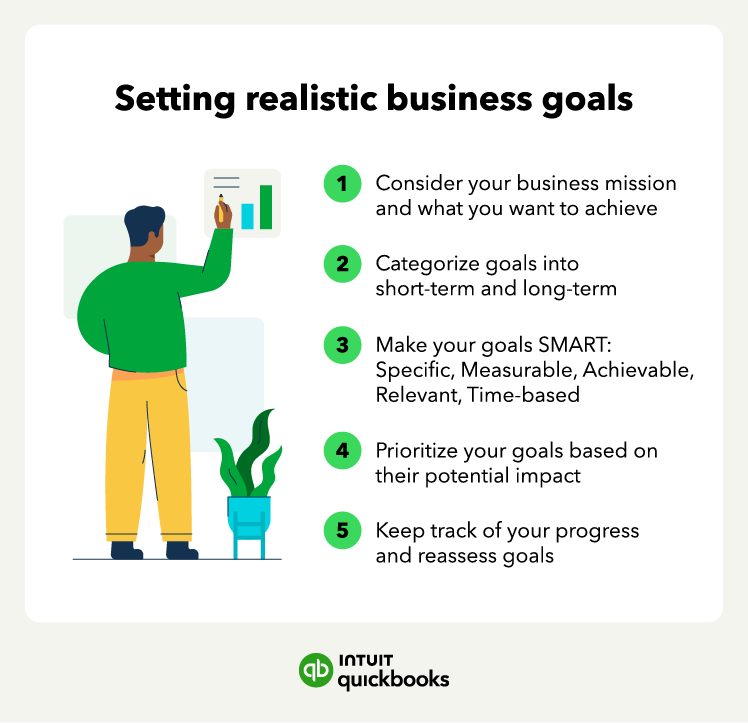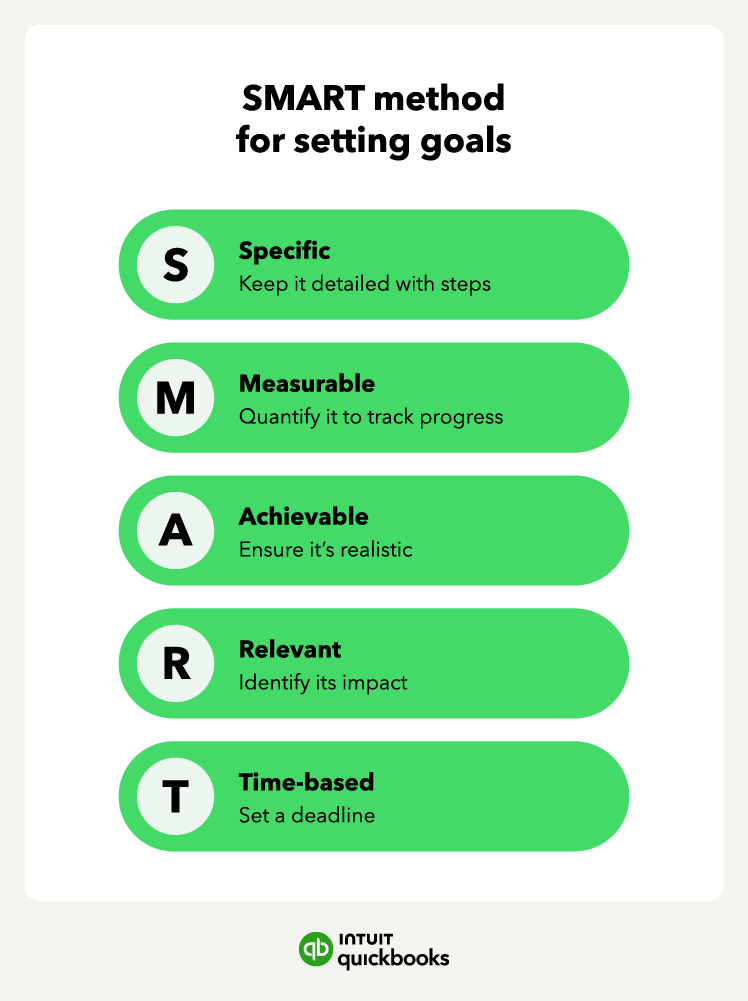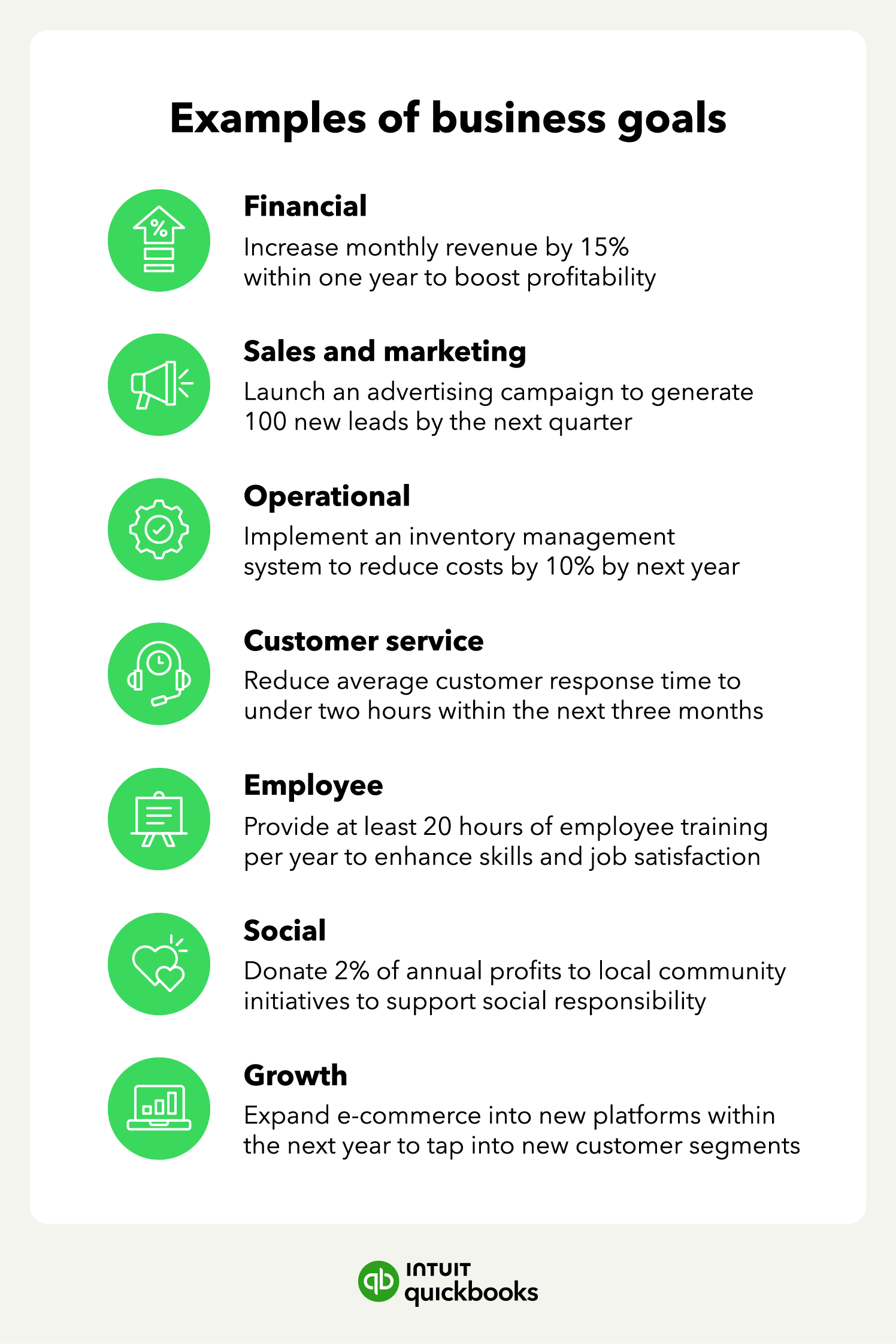To do that, ensure each of your goals is SMART, which means:
- Specific: Clearly define the objective and desired outcome.
- Measurable: Specify how you’ll measure success with specific metrics.
- Achievable: Ensure the goal is realistic, considering your resources and constraints.
- Relevant: Confirm the goal aligns with your mission and objectives.
- Time-based: Set a clear deadline for achieving the goal.
Ensuring each goal follows the SMART criteria will make them clearer and more objective, helping you focus and motivate you to achieve each goal.
For example, if your goal is to increase your e-commerce sales by 15% in the next six months as part of your goal to improve profitability, you have a SMART goal.
This goal is specific and measurable, as it defines exactly what you want to achieve with a percentage increase. It can be achievable depending on your sales trends. It's relevant because it aligns with improving profitability, and you aim to achieve it in six months, making it time-based.
4. Prioritize and assign business goals
Not all goals carry the same level of importance. You should prioritize your goals based on their potential impact on your business and the resources needed to achieve them. Organize your goals in order of priority so you can focus on the most impactful goals first.
After that, break down each goal into actionable steps and tasks to assign to your team. Identify who is responsible for each task and its associated goal to ensure accountability. If you’re a solopreneur, you can use this time to organize your tasks and create a schedule that will help you achieve your goals.
5. Measure the progress
Once you start working toward your business goals, it’s essential to track your progress to ensure you’re on the right path and determine whether you need to make adjustments.
Implement a system for tracking and reporting your progress, and review it regularly to adjust as needed. You can do this through a spreadsheet, a checklist, or project management software. Set reminders to monitor your progress, whether that’s on a monthly or quarterly basis.
Consider using all-in-one software that houses all your business information, such as invoices, expenses, and financial statements, to easily gather data to analyze your progress toward your goals.



















